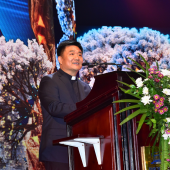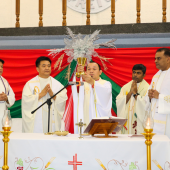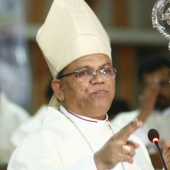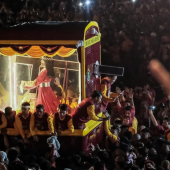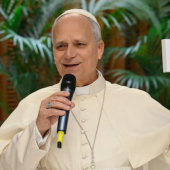People Power 1986 vs. Fake People’s Initiative (PI)
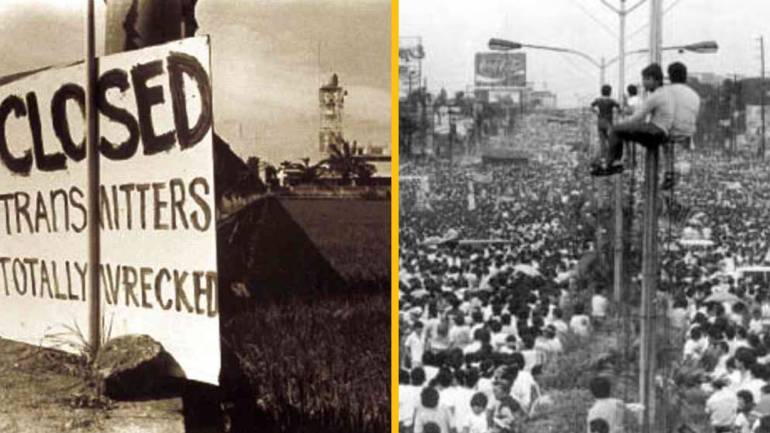
Fraud, deception, bribery, tactical ploys, and massive resource mobilization are the driving forces behind a fake people's power, as exemplified during Martial Law. Therefore, a fake people's power, such as a fake people's initiative (PI), is the polar opposite of an authentic people's power.
History says a people-powered peaceful revolution, similar to what occurred at EDSA in 1986, was a defining moment for Filipinos. Experience the miracle of a landmark event at the EDSA Shrine along the highway, built in honor of Our Lady of the Queen of Peace, the inspiration behind people's power, through her intercession.
The Filipino youth of today, and probably the old ones who suffered from political amnesia, can visit the Wall of Remembrance at EDSA, the most provident place of the non-violent People Power Revolution of 1986, which made Filipinos known as brave and peaceful people among all global citizens.
Engraved on that sacred Wall of Remembrance are the names of four valiant and uncompromising bishops who stood against Marcos's abuses, namely: Most Rev. Julio Labayen, OCD; Most Rev. Antonio Fortich; Most Rev. Miguel Purugganan; and Jaime Cardinal Sin himself.
The underprivileged, the marginalized, and the oppressed ran to them, who, knowing the risks and dangers of military retaliation, straight away provided a sanctuary to them and others branded as “enemies of Martial Law.”
The New York Times called Jaime Cardinal Sin (1928–2005) “a Champion of the Poor in the Philippines.” Neither silent nor indifferent, His Eminence was a good shepherd who was always with his flock and “smelled like sheep.”
When February 1986 came, Jaime Cardinal Sin passed like a bright meteor that unexpectedly lighted up the darkest heavens and captured the hearts of people worldwide with his evangelical audacity to speak up against the brutality of a powerful tyrant.
The people's initiative—the authentic people's power—was unexplainably overwhelming, to say the least, unexplainably overwhelming. Herds of people from all walks of life and all directions, from all shapes and colors, arrived with flashlights or candles, food, and guitars. There was solidarity; there was singing and sharing; there was harmony. The first night of vigilance was over.
The next day, the world saw a sea of humanity: barkadas after barkadas, families after families, student groups, religious congregations, priests and seminarians mingling with students, and nuns and Catholic girls giving rosaries and flowers to soldiers. The Filipinos listened to their shepherds, walked together, and went to Edsa, which was in the middle of Camps Aguinaldo and Crame. At first, it was scary for many, but then an explicable joy invaded the hearts of those who formed a sea of human barricades that expanded until Ortigas.
At one point, any military assault by land was impossible. Any military assault by air was equally impossible without killing at least a thousand of those who came. Either way, the situation became a big headache for General Fabian Ver, who was Marcos’ ever-loyal henchman.
Nick Joaquin’s narratives. In his narration of the events that occurred between February 22 and 25, 1986, Nick Joaquin cited a certain Joby Provido: “It was as if the whole world was suddenly shouting. We ran over to Crame. The multitudes there were delirious with joy. People were jumping, dancing, crying, hugging, and kissing, and everyone was shouting the name of Cory.” I borrowed this powerful narrative from Joaquin’s book, The Quartet of the Tiger Moon.
“In Mendiola, the loyalists in the Palace and the crowds outside were throwing stones at each other. Then the crowds got through the barbed wire, and fistfights ensued. Blood flowed. The mob was beating up a loyalist until a man in yellow yelled, ‘Stop that! He’s a Filipino too!’ The mob rushed their victim to an ambulance. How glorious was that night?”
Nick Joaquin scribbled some more notes: “This was the first revolution to be won with prayers, flowers, and love. To Marcos’ ‘smiling martial law,’ the answer was this mass action that Cardinal Vidal called ‘the smiling revolution.’”
In every episode of modern history, Mother Church did what she always did. The bishops were there, just like in 1945, even before World War II ended. The Catholic hierarchy inspired the Filipino people and called them to action through persuasion, using the Gospel principle of peaceful resolution. She had no police powers, but it appears that the Catholic Church became the most credible social force that was capable of mobilizing warm bodies to go out to the streets.
The truth was recorded and kept at Radio Veritas. In other provinces, bishops did the same. They encouraged the citizens to pray for the peaceful end of the Marcos regime. Such interventions by Catholic prelates were unmatched. Radio Veritas Asia was wiser to keep for posterity the Cardinal’s call to action and other broadcast tapes from the 1986 People Power Revolution in its archives.
Because the global community believed that the EDSA peaceful revolution was a gift to humanity, the United Nations Educational, Scientific, and Cultural Organization (UNESCO) has cataloged the audio files as part of the selected collection included in the “Memory of the World Program” and “Digital Preservation of Documentary Heritage.” Accordingly, UNESCO made this scientific assessment:
“RADIO BROADCAST OF THE PHILIPPINE PEOPLE POWER REVOLUTION... (is) the collection of sound recordings of 44 audiocassette tapes and 1 mini-disc documenting the actual, unedited day-to-day radio broadcast of Radio Veritas, DZRJ/DZRB, Radio Bandido, DZRH, and Voice of the Philippines (a government-owned radio station taken over by the people led by Radio Veritas on the 24th of February, 1986).”
Explaining the reasons why they considered those 1986 radio broadcasts worthy of inclusion in the world’s Documentary Heritage,” UNESCO continued, “The People Power Revolution was possibly a unique political event of the 20th century that stirred the world: the peaceful overthrow of an entrenched dictatorship through a spontaneous popular uprising, documented and influenced by the 20th-century medium of radio. The unbroken radio record over four days in 1986 is an unvarnished chronicle of a nation and its people at a crucial time in its history.”
UNESCO concluded by saying that “the world listened, watched, and read. The event will forever be a reference point for the peaceful resolution of deep national crises.”
EDSA 1986 was truly a show of an authentic people’s initiative to change.
* The writer is the Lead Convenor of the Love Our Pope Movement (LOPM) and author of Church Reforms, Volumes 1 and 2 (Claretians, 2023 and 2024).
Radio Veritas Asia (RVA), a media platform of the Catholic Church, aims to share Christ. RVA started in 1969 as a continental Catholic radio station to serve Asian countries in their respective local language, thus earning the tag “the Voice of Asian Christianity.” Responding to the emerging context, RVA embraced media platforms to connect with the global Asian audience via its 21 language websites and various social media platforms.









